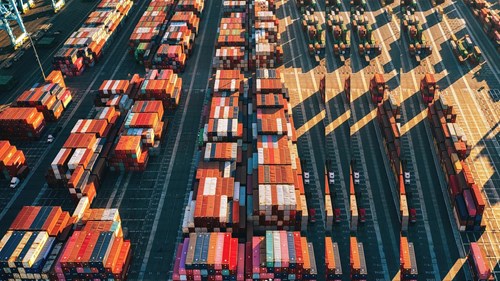New Product Liability Directive – massive duties for industry
The new Product Liability Directive (“PLD”) has passed the legislative process, was published in the Official Journal on 18 November 2024 and will enter into force on 8 December 2024 + 20 days (for the draft initiative, see our article “Tougher rules for product liability in Europe”).
Starting point
The national legislator has two years to implement the considerably stricter harmonised European law on product liability into a new German product liability act which will replace the current German Product Liability Act (Produkthaftungsgesetz).
The reform of the Product Liability Directive was driven by the European legislator’s recognition of the need to adapt existing legislation to new technologies, including artificial intelligence, new business models in the circular economy and new global supply chains.
While the reformed Product Liability Directive will maintain the well-known principle of strict liability, it will significantly broaden its scope and make it far simpler for injured parties to enforce their claims.
Product definition extended
The definition of a product now expressly covers software. This removes the previous uncertainty about whether software that is not contained in a physical object is also covered by the definition. The term “software” also explicitly covers artificial intelligence. However, free and open-source software that is developed or supplied outside the course of a commercial activity is excluded from the scope of the Product Liability Directive.
It is made clear that digital files are generally not products that fall within the scope of the new Directive. By contrast, digital manufacturing files explicitly fall within the definition of a product.
Liability is also extended to cover integrated or connected digital services (“connected services”). These include, for example, voice assistants that are often integrated nowadays and enable one or more products to be controlled by voice commands.
Definition of defect redefined
The new Product Liability Directive restructures the definition of a defect. While the old Directive from 1985 was based solely on the justified expectation of safety and substantiated this expectation with various examples, the new statute provides for a dual approach consisting of a person’s expectations regarding safety on the one hand and the legal requirements regarding safety on the other. The new Directive also contains a non-exhaustive list of examples of defectiveness. One of these is that the product fails to meet the critical cybersecurity requirements. This means that manufacturers take responsibility for intentional damage caused by a third party (hacker).
This results in an explicit link to product safety law, due to the fact that under the new definition of a defect, product recalls or other relevant interventions by a competent authority will lead to a product being deemed defective.
In the context of defectiveness, control over the product then must be taken into account, even after the product has been placed on the market or put into service. This results from the fact that digital technologies enable manufacturers to continue to influence the product via updates.
Liable economic operators and other modifications
It is still the case that the manufacturer of a product or component part, and possibly also the importer and distributor, are liable. However, the group of liable economic operators is massively expanded to include the fulfilment service provider and authorised representatives of the manufacturer. If the tortfeasor cannot be identified, even online platforms may then become liable under the Product Liability Directive.
Under the reformed Product Liability Directive, damage is now additionally deemed to exist if data not used for professional purposes is destroyed or corrupted.
The option of setting financial limits for the liability of an economic operator is not retained in the new Product Liability Directive. The excess that has applied up to now has been discarded. The limitation period after which an injured person has no right to claim compensation under the Directive is extended from 10 years to 25 years in cases where the symptoms of personal injury are, according to medical evidence, slow to emerge.
Judicial enforcement – disclosure of evidence
The injured party is still generally required to prove that the product is defective, that damage has occurred and that there is a causal link between the product defect and the damage. In the future, however, new rules of presumption may make it sufficient for the claimant to demonstrate the likelihood of a product defect and/or the causal link to successfully pursue claims for damages based on strict liability.
One of the most significant changes in connection with the judicial enforcement of claims is the duty to disclose evidence. After a claimant has established the plausibility of the claim for damages during proceedings, the defendant is obliged to disclose the relevant evidence under its control. If it fails to do so, rules of presumption will apply to the claimant’s benefit. Up to now, under German civil procedural law there has generally been no duty of disclosure on this scale, which is intended to help the claimant where there is a lack of evidence. It remains to be seen how the German legislator intends to implement this legal instrument, which is similar to the “discovery and disclosure” process under common law – in particular, whether it will decide to implement it in the German Code of Civil Procedure (Zivilprozessordnung) or in the German Product Liability Act, along the lines of section 33g of the German Act against Restraints of Competition (Gesetz gegen Wettbewerbsbeschränkungen).
Finally, product liability law is complemented by the possibility of a representative action under procedural law (more information on this can be found in our article “New class action – Act on representative actions now in force”).
Summary: tougher rules for industry
This new product liability law involves many new obligations for industry players. Above all, it should be noted that the legal definitions used by the Product Liability Directive offer considerable scope for interpretation. Strict liability is a sharp sword that will be applicable in a far greater range of situations thanks to the new Directive.










